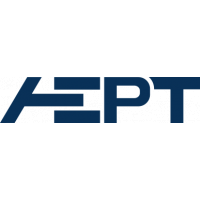The propagation mechanisms of plasma streamers have been observed and investigated in a surface dielectric barrier discharge (SDBD) using 2D particle in cell simulations. The investigations are carried out under a simulated air mixture, 80% N2 and 20% O2, at atmospheric pressure, 100 kPa, under both DC conditions and a pulsed DC waveform that represent AC conditions. The simulated geometry is a simplification of the symmetric and fully exposed SDBD resulting in the simultaneous ignition of both positive and negative streamers on either side of the Al2O3 dielectric barrier. In order to determine the interactivity of the two streamers, the propagation behavior for the positive and negative streamers are investigated both independently and simultaneously under identical constant voltage conditions. An additional focus is implored under a fast sub nanosecond rise time square voltage pulse alternating between positive and negative voltage conditions, thus providing insight into the dynamics of the streamers under alternating polarity switches. It is shown that the simultaneous ignition of both streamers, as well as using the pulsed DC conditions, provides both an enhanced discharge and an increased surface coverage. It is also shown that additional streamer branching may occur in a cross section that is difficult to experimentally observe. The enhanced discharge and surface coverage may be beneficial to many applications such as, but are not limited to: air purification, volatile organic compound removal, and plasma enhanced catalysis.
| Field | Value |
|---|---|
| Publisher | |
| Authors | |
| Release Date | 2021-03-03 |
| Identifier | 881ac5cc-2e97-482e-a7e0-078c6585e635 |
| Permanent Identifier (DOI) | |
| Permanent Identifier (URI) | |
| Is supplementing | |
| Plasma Source Name | |
| Plasma Source Application | |
| Plasma Source Specification | |
| Plasma Source Properties | Atmospheric pressure twin Surface Dielectric Barrier discharge, intended for air purification and or plasma catalysis applications. Experimentally driven in the multi kV and kHz regime, providing plasma powers between 1 and 100 W. This inception of the discharge is numerically modeled with a PIC/MCC code under two voltage waveform conditions. In the first model the powered electrode is powered by a +/- 8kV DC voltage for 1 ns. In the second model, the powered electrode is powered by a pulsed voltage with a rise time of 80 kV/s, pulsing from 0 V, to +8kV, to - 8kV, and back to +8kV all within a 2 ns timescale. |
| Language | English (United States) |
| License | |
| Plasma Medium Name | |
| Contact Name | Ryan Thomas Nguyen-Smith |
| Contact Email | |
| Plasma Diagnostic Properties | Numerical investigations with a PIC/MCC model are used and simulated in the VSim simulation software. The PIC/MCC model uses the electrostatic approximation of the Boltzmann equation. A grid size of 500 x 4000 and 500 x 1000 were used with square grids of 2.4µm in size, based off of the courant limit and typical Debye lengths under the considered conditions. A cutting cell technique was used to handle the irregular geometry of the curved electrode. Neumann boundary conditions were used as the walls are at a floating potential. The time steps were held constant at 2x10-13 s. The simulated dielectric barrier has a dielectric coefficient of 9.
|
| Public Access Level | Public |
| Plasma Diagnostic Name | |
| Funding Agency | |
| Project | |
| Subproject |
Data and Resources
- Applied potential and electric fieldzip
Applied potential and resulting XY electric field components. Contents are...
Download - Cell Geometryzip
Considered geometry of the simulated conditions. Contents are 501 rows by...
Download - PIC/MCC - DC conditionszip
Contents are 500 rows by 4000 columns corresponding to the centers of...
Download - PIC/MCC - Pulsed DC conditionszip
Contents are 500 rows by 1000 columns corresponding to the centers of...
Download


![[Open Data]](https://assets.okfn.org/images/ok_buttons/od_80x15_blue.png)